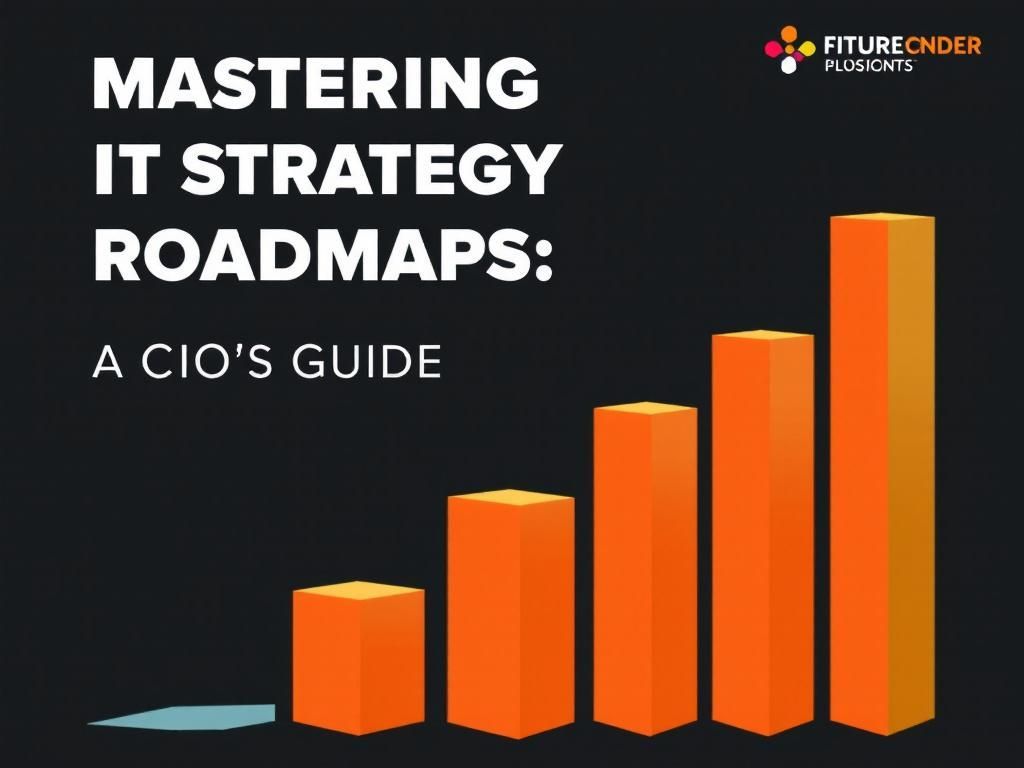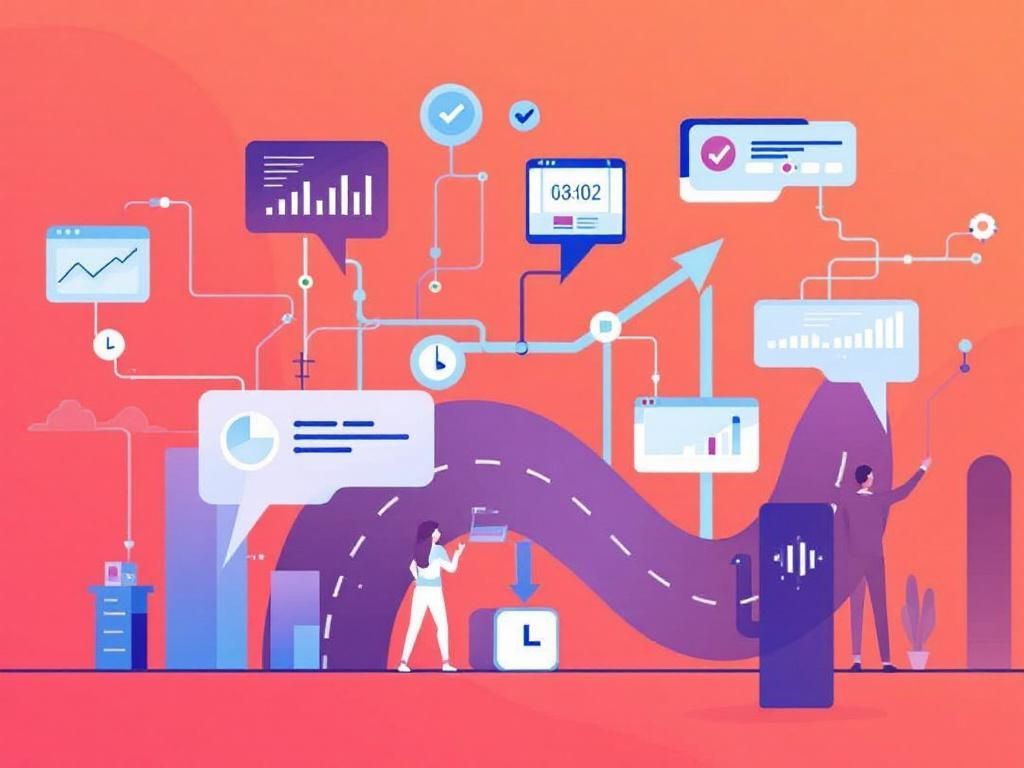Mastering IT Strategy Roadmaps: A CIO’s Guide
Discover essential insights for CIOs on creating effective IT strategy roadmaps that drive organizational success and innovation.

In today’s fast-paced digital landscape, organizations are challenged to align their technology initiatives with overarching business goals. For Chief Information Officers (CIOs), creating a comprehensive IT strategy roadmap is essential for navigating this complexity. A well-crafted roadmap not only outlines the technology journey but also ensures that IT investments drive value and support the organization’s mission. This guide aims to dissect the components of effective IT strategy roadmaps and offer insights into mastering the process.
Table of Contents
Understanding the Importance of IT Strategy Roadmaps
IT strategy roadmaps serve as visual representations of an organization’s strategic IT initiatives. They provide clarity and guidance on the following:
- Alignment between IT and business objectives
- Prioritization of IT projects
- Resource allocation and management
- Risk management and mitigation strategies
- Stakeholder communication and engagement
Key Components of an IT Strategy Roadmap
A robust IT strategy roadmap typically includes several critical components:
1. Vision and Objectives
Begin your roadmap with a clear statement of your IT vision and objectives. This section should encapsulate the long-term goals of the IT department in relation to the overall business strategy.
2. Current State Assessment
Conduct a thorough assessment of the current IT landscape. This includes:
- Infrastructure capabilities
- Application portfolio
- Data management practices
- Security and compliance status
3. Gap Analysis
Identify gaps between the current state and desired future state. This analysis helps pinpoint areas needing improvement and informs the prioritization of initiatives.
4. Strategic Initiatives
List the strategic initiatives that will help achieve the objectives set in the vision statement. These could include:
- Cloud Migration
- Cybersecurity Enhancements
- Data Analytics Implementation
- Integration of Artificial Intelligence
5. Roadmap Timeline
Develop a timeline for the implementation of each initiative. This timeline should include:
| Initiative | Start Date | End Date |
|---|---|---|
| Cloud Migration | Q1 2024 | Q4 2024 |
| Cybersecurity Enhancements | Q1 2024 | Q2 2025 |
| Data Analytics Implementation | Q2 2024 | Q2 2025 |
| Integration of AI | Q3 2025 | Q4 2026 |
6. Budget and Resource Allocation
Outline the estimated budget and resource requirements for each initiative. Include both financial estimates and human resources needed for successful execution.
7. Success Metrics and KPIs
Establish success metrics and key performance indicators (KPIs) to measure the effectiveness of the roadmap. Examples could be:
- Return on Investment (ROI)
- Project completion percentage
- User satisfaction scores
Effective Communication of the Roadmap
Communicating the roadmap to stakeholders is crucial for alignment and buy-in. Consider the following strategies:
1. Tailor Your Messaging
Adapt communications to the audience. Executives may need high-level summaries, while technical teams may require detailed project plans.
2. Utilize Visual Tools
Make use of visuals like charts and graphs in presentations to clearly articulate goals, timelines, and progress.
3. Regular Updates
Schedule regular updates to keep stakeholders informed about progress and any adjustments to the roadmap. This promotes transparency and accountability.
Common Pitfalls to Avoid
While developing an IT strategy roadmap, it’s essential to be aware of potential pitfalls:
1. Lack of Stakeholder Engagement
Failing to engage key stakeholders can lead to misalignment and resistance during implementation.
2. Overcomplicating the Roadmap
A roadmap should be clear and concise. Avoid adding unnecessary complexity that could confuse the audience.
3. Inflexibility
The business landscape is constantly evolving. Ensure your roadmap is adaptable to change and allows for re-evaluation.
Conclusion
Mastering the art of creating IT strategy roadmaps is an invaluable skill for CIOs seeking to drive their organizations forward. By focusing on key components, effective communication, and awareness of common pitfalls, CIOs can align technology initiatives with business goals, ensuring that IT remains a crucial partner in organizational success. As technology continues to evolve, so too must the strategies that guide its use, making the IT strategy roadmap a living document that shapes the future.
FAQ
What is an IT strategy roadmap?
An IT strategy roadmap is a strategic plan that outlines the technology initiatives and projects that align with an organization’s business goals over a specific time frame.
Why are IT strategy roadmaps important for CIOs?
IT strategy roadmaps are crucial for CIOs as they provide a clear direction for technology investments, ensure alignment with business objectives, and help in prioritizing resources effectively.
How do you create an effective IT strategy roadmap?
To create an effective IT strategy roadmap, CIOs should assess current technology capabilities, define business goals, identify key initiatives, establish timelines, and engage stakeholders throughout the process.
What are the common challenges in developing an IT strategy roadmap?
Common challenges include lack of stakeholder buy-in, rapidly changing technology landscapes, insufficient budget, and difficulty in measuring the success of technology initiatives.
How often should an IT strategy roadmap be updated?
An IT strategy roadmap should be reviewed and updated regularly, ideally annually or bi-annually, to reflect changes in business goals, technology trends, and market conditions.
What role do key performance indicators (KPIs) play in IT strategy roadmaps?
KPIs are essential for measuring the success of initiatives outlined in the IT strategy roadmap, helping CIOs track progress and make data-driven adjustments to their strategies.






